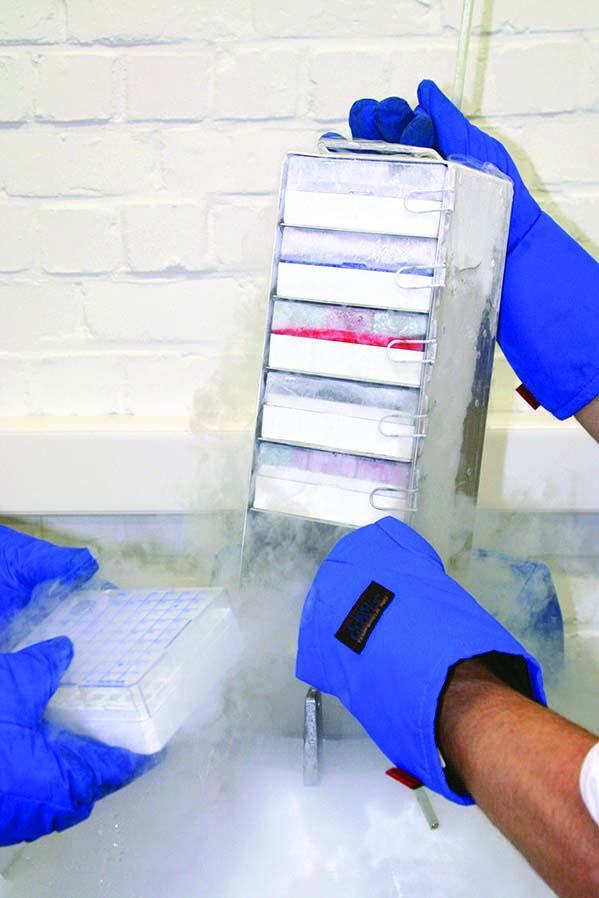Bananas in the deep freeze: 10 years of cryopreservation

The Bioversity International Musa Germplasm Transit Centre (ITC) holds the world’s largest collection of banana (Musa spp.) germplasm. In 2013 it marked 10 years of cryopreservation. Find out more in this Annual Report story.
The Bioversity International Musa Germplasm Transit Centre (ITC) holds the world’s largest collection of banana (Musa spp.) germplasm, and in 2013 it marked 10 years of cryopreservation – deep-freezing biological tissue so that its genetic material can be used at a later time.
Now with over 1,400 samples of edible and wild species of banana held at KU Leuven in Belgium, the ITC is well on its way to meeting its goal of conserving the entire banana genepool for the benefit of future generations.
Seedbanks are the more common way to conserve plant genetic material, but the bananas we eat don’t produce seeds – they need to be propagated vegetatively through stem cuttings. Years of selective breeding have produced one of the world’s most important crop groups, depended upon both as a staple food and an important commodity by over 400 million people throughout the tropics and subtropics.
The raw materials for banana breeding are the wild Musa species and diverse varieties found in Asia, Africa and Latin America. These are the genes that may help sustainably improve production in the face of pest and disease attacks and changing environmental conditions, and cryopreservation is the best way to store Musa tissue over the long term.
Cryopreservation involves plunging plant material in liquid nitrogen (-196°C) or storing it in its vapour phase (-150°C). The process avoids the formation of harmful ice crystals, no sophisticated freezers are needed, and the material can be kept safely for hundreds of years in liquid nitrogen tanks without any biological changes taking place.
In 2003, the ITC began to apply a cryopreservation protocol for banana that is efficient and applicable to all Musa accessions in the ITC collection. The protocol proved to be very robust and was successfully applied to 30 different plant species – one of the reasons the ITC is now recognized as a centre of excellence in cryopreservation.
Thanks to financial support by the Gatsby Charitable Foundation, the World Bank, the Global Crop Diversity Trust, the Belgian Development Cooperation, and the CGIAR Research Program on Managing and Sustaining Crop Collections, 885 banana accessions (61% of the in vitro collection) belonging to 30 different genomic banana groups are now safely stored in liquid nitrogen.
This story was taken from the Annual Report 2013 here.
